Many print sellers have great marketing strategies, some of which we’ve discussed on our blog already. Visual merchandising is, however, a commonly neglected yet powerful traditional marketing tool.
Simply put, visual merchandising is the practice of using the visual elements of a store to increase profits. This includes creating displays, changing floor plans, adding signage, and more.
It’s time to attract more customers and increase sales by giving your brick-and-mortar print shop a makeover. Start by following these 7 simple steps.
Visual Merchandising for Your Print Shop
Step 1: Determine Your Focus
Ask two questions.
Question #1:
What do my customers want most?
This can be what is ordered most right now, ordered more than usual, or getting the most inquiries.
Question #2:
What do I want to sell most?
Maybe there’s unpopular product that needs a marketing boost, or a brand new product you’ve just launched.
Choose one or both to create your focal point(s). Focal points should be eye catching and not compete with each other.
Step 2: Organize
There are two approaches.
Approach #1: Group similar items together.
This helps clients find them more easily. For example, you can hang all your poster products on one wall. Yellowhammer Creative uses this approach well.
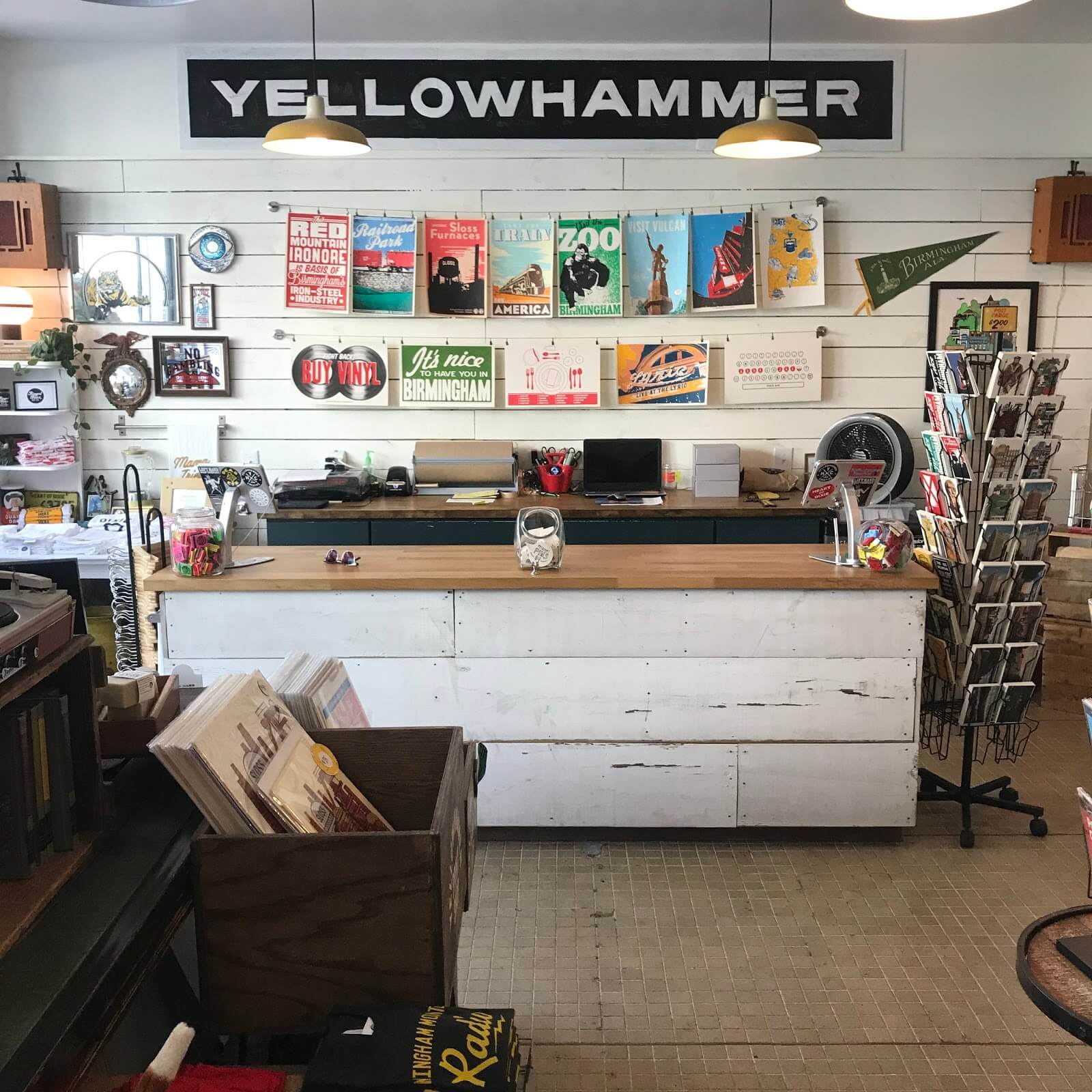
Approach #2: Display different items in clusters.
This helps with cross-selling and generates want. For example, you can display all your stationery products in a pack. COG Print does this on their website, but you can easily apply this in-store too.
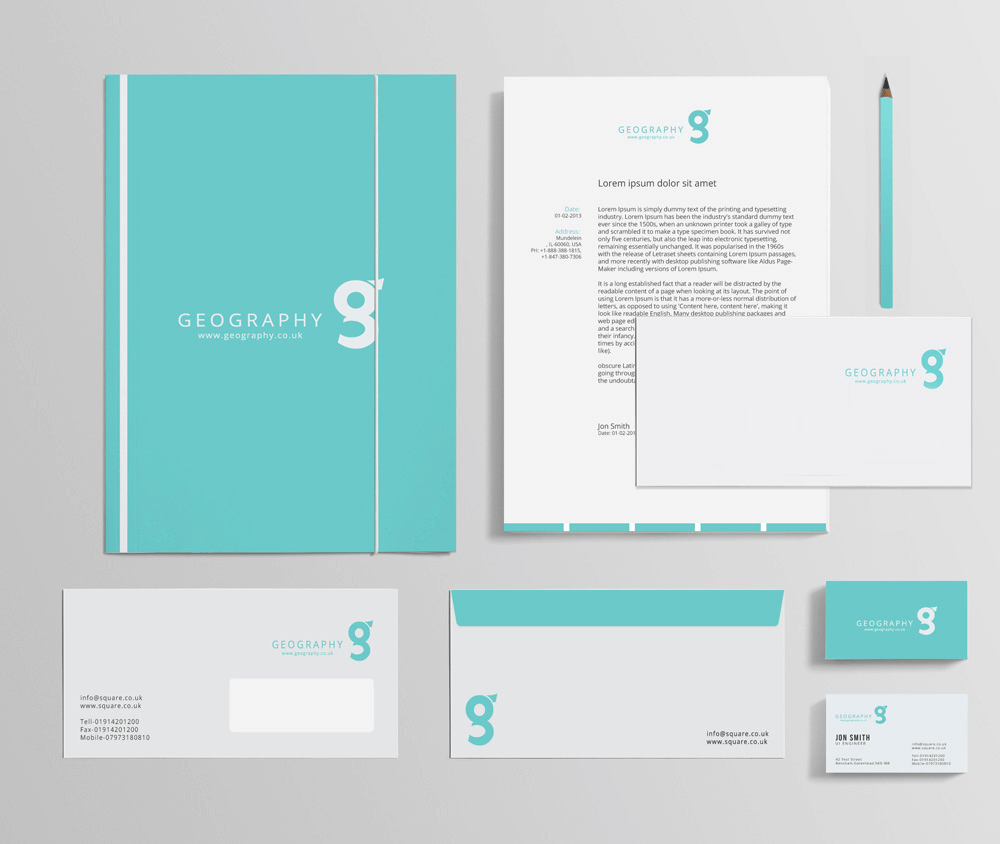
Step 3: Get Creative
Look for ideas across different industries. Retail stores are great at visual merchandising. Check out their visual displays and learn from them.
Keep an idea bank. Brainstorm ideas with your team. Conduct and experiment where the subjects walk through the print shop and comment on what they’re seeing.
Window displays in particular are great places to differentiate yourself and attract new walk-ins. Here’s a creative example by Mount Street Printers.
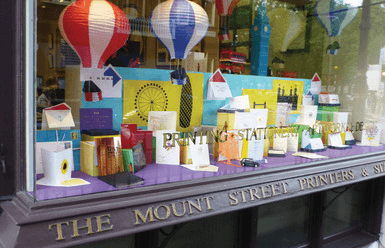
Step 4: Set the Mood
Keep the mood of your shop consistent. Consider what kind of feel your customers appreciate. For example, if your target is urban designers, you may want to consider the latest design trends in your setup.
Use good lighting, which can bring out the quality of coatings and inks, but be careful about exposing certain products to direct sunlight. Other things to consider are colors, negative space, and optional music.
Even small shops can set a mood. Here, Pinwheel Print Shop’s craft fair display takes up only a corner.
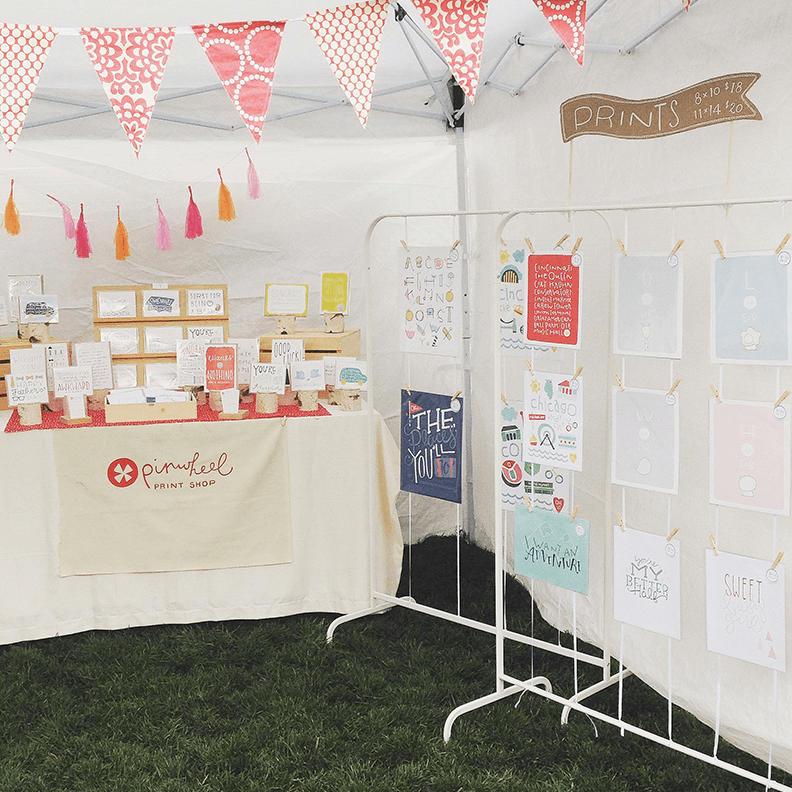
Step 5: Remove Distractions
Make sure your shop is clean. Dust, sweep, and wipe. Paper dust from presses can accumulate and some customers can be allergic.
Another important tip is to avoid overusing signage. A print seller’s advantage is being able to use products themselves as signage.
If anything does not contribute to visually improving your shop, store it out of sight or transform it into something that does. The Yellow Print Shop cleverly transforms a distraction (excess stock) into a decorative element through color. Note also their clean windows.
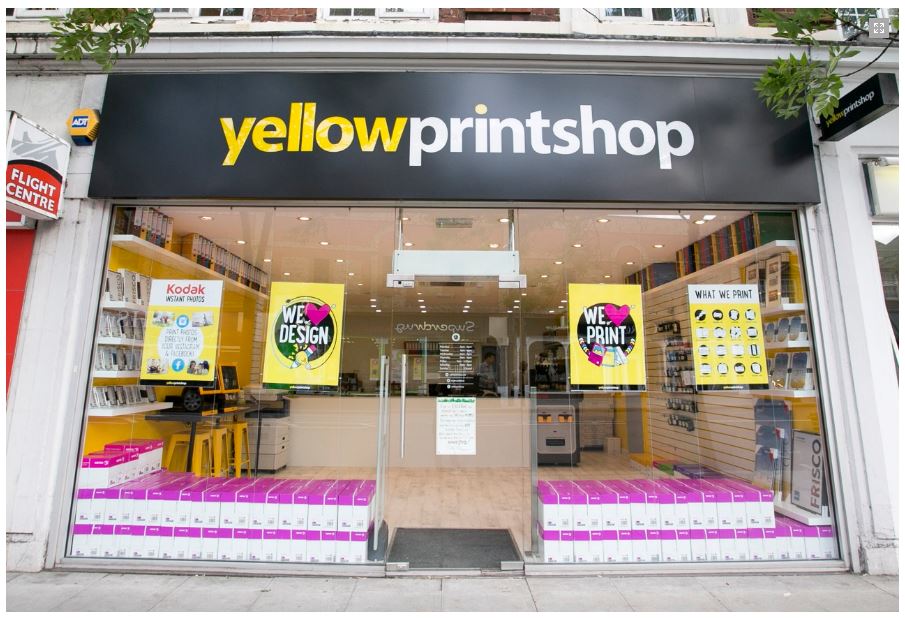
Step 6: Track the Results
Decide on a suitable way to measure success. You can use your current measurement methods if you have them. Some retail KPIs can be applied to print orders as well.
Take note of other changes too that don’t necessarily increase immediate sales. For example, are clients now staying longer in your shop?
Step 7: Change It Up
Decide on how frequently you want to change your full displays or part of your displays. Aim for every month if possible. If you’re a larger shop, organize a visual merchandising team to help plan and set up displays.
Don’t forget to optimize your shop for special occasions, from creating a greeting card focal point leading up to the holidays to special discount displays for particular items.
A Continuous Process
Ultimately, visual merchandising is interacting with client needs in a tangible way. It also helps them remember your shop, which builds customer loyalty. It’s a continuous improvement process, just like any other part of running a business.
On that note, if you’re always on the lookout for more ways to improve your print business, we welcome you to subscribe to Printer Success so that you never miss a learning opportunity.
We’d love to see your revamped print shop! Share a link in the comments below.
Related topic: The Ultimate Guide to ED Pills: Understanding and Using Them Safely
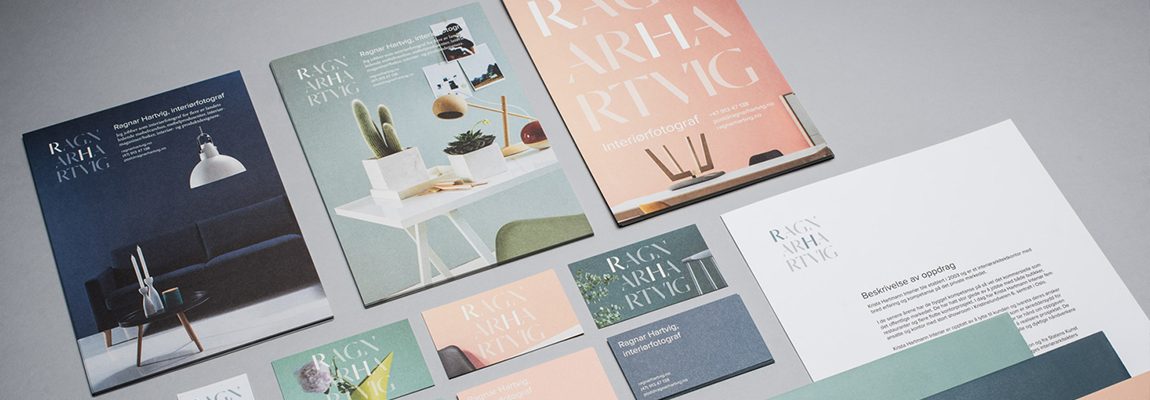
















I closed my last print SHOP 3years ago! I opened the first in 1972 ,used to have 4 locations
Now building a Website…I could use Your constructive criticism! My URL: https://www.misterdiscount365.com
Really interesting article with some good points. Cleaning is so important and I have visited quite a few print companies which could do with a makeover. Space is the usual issue in retail print environments which is why everything tends to be crammed in on show to clients.
Hi Alistair,
We’re glad you enjoyed this article and agree with the importance of having a clean shop. We hope to continue to help print business grow through our articles here and through SinaLite.
All the best.